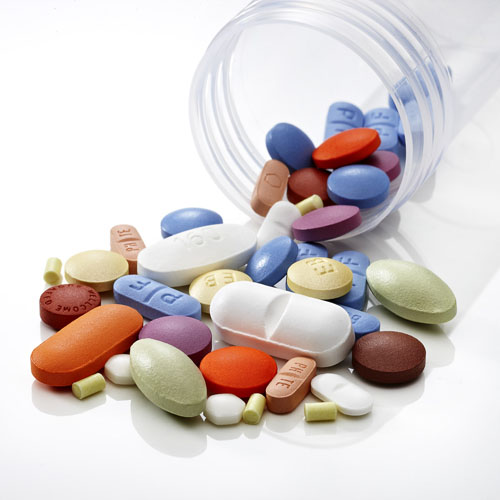At the event, Dr Moore’s IPEC colleagues will be presenting an essential roundtable entitled “Excipient Excellence: The Power Grade Selection” on 9 October at 11:35.
Featuring experts from across Big Pharma (Eli Lilly) and Nigel Langley, IPEC Americas Chair, Joseph Zeleznik, Chair Elect at IPEC Americas and Vice Chair Science and Regulatory Policy, IPEC, Priscilla Zawislak.
What next for Excipients?
In this report I’ll share my perspectives on what we can expect for excipients in the future. Excipients have always been an important part of drug product formulations but have not always had the same level of focus as the drug substance.
Even regulators in many countries don’t have the time or resources to put them higher on their agenda. Whereas this may have been an acceptable approach in the past, it’s not going to be a sustainable approach in the future because their role and function in modern drug products is ever more important.
Excipients are being brought into the development of new medicinal products earlier and this requires that their quality is established, including the standards for GMP (good manufacturing practice) and GDP (good distribution practice).
What we are also seeing is that greater regulatory oversight and burdens are likely to follow as the importance of excipients in the delivery of newer therapies has never been more critical.
Alongside this greater security we have the tragic backdrop of, yet again, too many infant deaths through the economically motivated adulteration of pharmaceuticals; notably, most of the blame has fallen on the excipients used in the most recent cases.
It is therefore a regulatory, industry and moral imperative that all parties involved need to increase their oversight of excipients and remain vigilant long into the future.
What is an excipient?
The traditional definition is that an excipient is anything that is not the active substance in the drug product. However, as I have long argued, this is rather too simplistic definition.
I prefer the International Pharmaceutical Excipients Council definition as “substances other than the API that have been appropriately evaluated for safety and are intentionally included in a drug delivery system.”1
Some key words here include “intentionally” — that is, these substances are deliberately added to the drug delivery system. And thus, they must serve some purpose in the delivery of the drug.
The legal definition is open to defining anything in the drug product that is not intentionally added as an excipient, such as impurities or contaminants! I don’t find that thought very helpful. The other key part of the IPEC definition is that they have been appropriately evaluated for (patient) safety.
However modern technology is pushing the boundaries of these simplistic views of the components of a drug product. There is no better example than the mRNA vaccines that protected so many of us from the worst of COVID-19 infections.
Here, the excipients that created the lipid nanoparticles that carried the mRNA into our bodies had such an important role that they ranked equally as important as the mRNA.
It’s not hyperbolic to say that, without them, there would have been no therapy.
It’s a great example of the purpose of excipients and the reason why they are included in the drug product — becoming much more than a simple filler. Thus, we should perceive them as a delivery enhancement vehicle essential to many medicines’ efficacy.
The challenge, as many of you will be aware, is how do we ensure the excipients we use remain fit for purpose as new medicines come to market. Newer technology requires newer excipients that best fit the purposes of that unique formulation — not a make do approach with what we already have.
Sadly, there remains no easy or effective way to develop new and novel excipients and demonstrate their suitability and patient safety except through a new drug application.
This disadvantages the excipient manufacturer and ties them into one customer who then must include all the details — including the novel excipient safety date — in their dossier. Only a handful of novel excipients have been introduced in the past years despite the need from the new technologies.
At least the US FDA has recognised that this is an unhealthy situation and has instigated a Novel Excipient Review pilot programme to see if another way forward can be engineered.2
In Europe too, the proposed revision to the pharmaceutical regulations would generate a Drug Master File approach for novel excipients.3 Let’s hope that both these are successful and are implemented … because we need to reduce the barriers for delivery of new excipients.
Another example of the blurring of the distinction between excipients and drug substances includes the adjuvants often used in vaccines. Such materials are not inactive in the manner usually associated with excipients but are not traditionally “active” either.
So, are these excipients? There is no doubt these materials do have greater regulatory scrutiny, not least because their route of administration will be parenteral, but also because of their critical function in the delivery of effective vaccines.
Another example of a non-traditional excipient can be found in medical devices. That name can be misleading because some medical devices are indistinguishable from drug products.
In such medical devices there can be a “critical” component that is the key to delivery of the therapy to the patient. The delivery of that critical component requires the use of other materials that are inert. Such substances are being called excipients by the industry! And why not?

The traditional definition fits these materials too. And then there are combination products that fuse medical devices and drug products into one delivery mechanism for the patient. Here, excipients may be found in both the drug product and the medical device part of the product.
The use of biological therapies also continues to increase, but the methods of manufacture here are very different to those used in the chemical industry wherein many small molecule active ingredients are made.
Many substances are used in biotransformations and these are removed from the active ingredients. Yet their intimacy with the active ingredient requires that they be treated as excipients too; they need to be of known purity and quality and be made according to a relevant GMP.
These materials also have a purpose, albeit not directly in the delivery of the active substance to the patient. EXCiPACT has adapted its Certification Scheme for excipients to include these substances, coining the term Pharmaceutical Auxiliary Materials (PAMs) to describe them.
This step was prompted by leading organisations in the industry who needed to demonstrate the purity, quality and GMP used in the manufacture of PAMs. They considered EXCiPACT GMP to be a good standard to apply to the manufacture of these substances.
With these examples, we can begin to see that the definition of what an excipient is has been extended and that the simple limitation that an excipient is only present in a traditional drug product is unhelpful; if these substances used in medical devices, vaccines and so on are not excipients, what are they? And where do they fit into the existing regulatory frameworks?
But there are some common characteristics for these substances in these diverse cases:
- defined quality and purity
- a purpose in the medicinal therapy (used here to mean drug products, medical devices or any other therapeutic treatment)
- be manufactured to a suitable standard of GMP
Thus, a wider definition for an excipient that can accommodate all these other uses could be as follows: “Excipients are substances that are intentionally added to a therapeutic product to serve a purpose in aiding the delivery of the therapy to the patient. They have been appropriately evaluated for patient safety.“
This permits excipients to be present in relevant medical devices as well as traditional drug products.
What’s key is the emphasis that the excipient is added to the therapeutic product for a purpose — be that protection of the active component(s), solubilisation, encapsulation, etc. It is this purpose that determines the attention given to the excipients in the regulatory approval process.
The purpose is paramount when determining quality, purity and, most critically, the standards of GMP used in its manufacture.
Thus, excipient GMPs such as IPEC-PQG GMP and EXCiPACT GMP for pharmaceutical excipients are suitable in most cases when the purpose and function of the excipient lies within well-known boundaries.
When the functionality is novel, or the excipient is new, then the GMP that needs to be applied will be much the same as for Active Substances (ICH Q7). A good example here is those lipid nanoparticles used for the mRNA COVID-19 vaccines.
Excipients? Yes, but all the regulatory submissions were evaluated the same way as for the Active Substance and they had to be made to ICH Q7 standards.
With an increased scope of what an excipient can be, the huge variety of functions that excipient perform then how then can we determine what GMP should be used in its manufacture?
There is already an official and an excellent guideline that can cope with this dimension: guidelines on the formalised risk assessment for ascertaining the appropriate good manufacturing practice for excipients of medicinal products for human use.
If you consider an excipient in this wider sense and input the purpose of the excipient into the formalised risk assessment guideline along with the and the source and security of the excipient supply chain, then the result will give be the correct answer for the GMP and GDP that is required.
Conclusions
Modern technology is broadening the definition of what an excipient is and how we should ensure its quality.
By revising our definition of an excipient, the existing guidelines and risk assessment guidelines can be applied to all these new applications for excipients. And with that will come the assurance that all excipients are fit for purpose and safe for use.
References
- https://ipec-federation.org/glossary-of-terms-2021/.
- www.fda.gov/drugs/cder-conversations/cder-conversation-novel-excipient-review-pilot-program.
- https://health.ec.europa.eu/medicinal-products/pharmaceutical-strategy-europe/reform-eu-pharmaceutical-legislation_en#:~:text=The%20proposal%20adopted%20by%20the%20Commission%20revises%20and,rare%20diseases%20%28Regulation%201901%2F2006%20and%20Regulation%20141%2F2000%2FEC%2C%20respectively%29.

